U.S. Woodland
The U.S. Woodland is a camouflage pattern that was used as the default camouflage pattern issued to the United States Armed Forces from 1981, with the issue of the Battle Dress Uniform, until its replacement in the mid to late 2000s.[1] It is a four color, high contrast disruptive pattern with irregular markings in green, brown, sand and black. It is also known unofficially by its colloquial moniker of "M81" after the Battle Dress Uniform it was first used on,[2] though this term was not officially used by the U.S. military.
| U.S. Woodland | |
|---|---|
 Digitized swatch of the U.S. Woodland pattern | |
| Type | Military camouflage pattern |
| Place of origin | United States |
| Service history | |
| In service | 1981–2012 (U.S. military) |
| Used by | See Users (for other non-U.S. users) |
| Wars | Invasion of Grenada United States invasion of Panama Lebanese Civil War Somali Civil War Persian Gulf War Yugoslav Wars Operation Uphold Democracy War in Afghanistan Iraq War 2008 Cambodian-Thai stand-off Russo-Georgian War Syrian Civil War Russo-Ukrainian War |
| Production history | |
| Produced | 1981–present |
Although completely phased out of frontline use in the U.S. Armed Forces, U.S. Woodland is still used on some limited level by some branches such as MOPP suits, equipment and vests left over while some modernized uniforms (either BDU or commercial) were worn specifically by special forces such as USMC Forces Special Operations Command and United States Navy SEALs.
Development and history
The woodland pattern is nearly identical to the brown-dominant version of the ERDL pattern, only differing in that it is printed from an enlargement of the original.[3] The woodland pattern was enlarged and the borders of the splotches were re-drawn to make them less regular. Part of the earlier pattern was left off the later pattern because the enlargement made them no longer fit on the width of the bolt of cloth. The pattern does not repeat horizontally across the width of the bolt, but only vertically along its length. The pattern was officially adopted in 1981.[3]
The effect of enlarging the pattern was to make the pattern more visible at a distance, avoiding "blobbing", where smaller areas of color seem to blend into larger blobs. This also gave the pattern a higher contrast, making it stand out more sharply at close distances and defeating the camouflage effect at closer range. Digital and Flecktarn camouflage patterns resolve this problem by using a range of blob sizes to give a similar effect whatever the distance.
These changes reflected a shift in the tactical focus of the United States military from fighting an extremely close-range war such as the one in South Vietnam to a longer-range one such as on the fields of Europe.[4][5]
Usage

U.S. Army
In the U.S. Army, the woodland-patterned Battle Dress Uniform was replaced by the digital Universal Camouflage Pattern (UCP) found on the Army Combat Uniform, introduced in 2004. UCP itself was replaced by the Operational Camouflage Pattern (OCP) in 2019. The pattern is still used on MOPP suits and some older models of body armor yet to be retired, such as PASGT vests and Interceptor Body Armor.
U.S. Navy
The U.S. Navy no longer uses the Woodland pattern. Most of the Navy has transitioned to the Navy Working Uniform, which uses digital patterns in either a woodland colorway (NWU Type III) or, for some deployed tactical units only, a desert version (Type II).
U.S. Marines
The Woodland Pattern BDU was phased out by the Marine Corps with the introduction of the digital MARPAT Marine Corps Combat Utility Uniform in 2002, although it was reintroduced for the United States Marine Corps Forces Special Operations Command in 2011[6] and was also worn by MARSOC forces in the War in Afghanistan.
U.S. Air Force
The Air Force phased out the woodland pattern battle dress uniform in 2011 when they went to the Airman Battle Uniform (ABU) which used a pixelated version of the Tigerstripe pattern. It was in turn replaced by the Army's OCP by 2021.[7] The Civil Air Patrol, the U.S. Air Force's civilian auxiliary, also used woodland patterned BDUs until being discontinued 15 June 2021.[8]
State defense forces

Several state defense forces use the Woodland Pattern on their BDUs.[9] Members of the Virginia Defense Force wear a Woodland version of the Army Combat Uniform (ACU).[10][11]
Law enforcement
The pattern also sees use among police departments, such as the Rhode Island State Police.[12]
Users
_(494-11).jpg.webp)
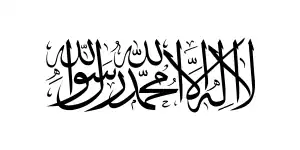 Afghanistan: Used by Afghan National Army both clones and US surplus uniforms before switching Spec4ce Camouflage[13] after 2021 takeover woodlands continued to use by Islamic National Army.
Afghanistan: Used by Afghan National Army both clones and US surplus uniforms before switching Spec4ce Camouflage[13] after 2021 takeover woodlands continued to use by Islamic National Army. Argentina: Clones made for Argentine military.[14]
Argentina: Clones made for Argentine military.[14] Armenia: Adopted an Armenian-made Woodland pattern.[15]
Armenia: Adopted an Armenian-made Woodland pattern.[15] Azerbaijan: Obtained Turkish-made Woodland uniforms and used from around 2000-12.[16]
Azerbaijan: Obtained Turkish-made Woodland uniforms and used from around 2000-12.[16].svg.png.webp) Australia: Used by OPFOR during the 1990s and 2000s
Australia: Used by OPFOR during the 1990s and 2000s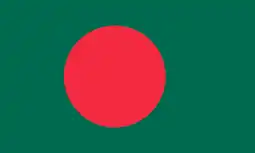 Bangladesh: Used Woodland uniforms with bright yellow patterns.[17]
Bangladesh: Used Woodland uniforms with bright yellow patterns.[17]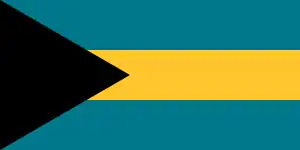 Bahamas
Bahamas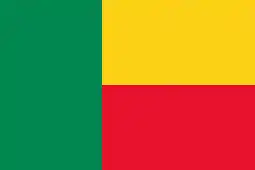 Benin
Benin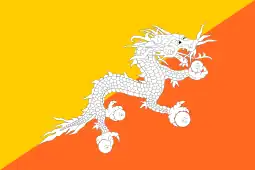 Bhutan[18]
Bhutan[18].svg.png.webp) Bolivia
Bolivia Bosnia and Herzegovina
Bosnia and Herzegovina
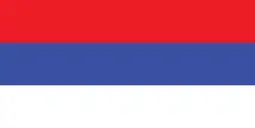 Republika Srpska: Used by the RS' Special Anti-Terrorist Unit.[19]
Republika Srpska: Used by the RS' Special Anti-Terrorist Unit.[19]
 Cambodia: Used Cambodian-made Woodland uniforms.[20]
Cambodia: Used Cambodian-made Woodland uniforms.[20]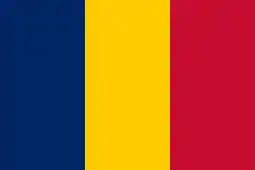 Chad
Chad.svg.png.webp) Canada: Formerly used by the Canadian Forces as the pattern of helmet covers for the M1 Helmet (both regular and paratrooper variants), the PASGT Helmet and the Spectra Helmet otherwise known as the 'Barrday Helmet'.[21] The Woodland pattern had originally entered service around the same time as the US and had become the standard issue cover by the late 1980s, replacing the older Mitchell Pattern covers.[21] The cover pattern was fully phased out and replaced by CADPAT by the mid 2000s.[21] Helmet covers as well as uniforms (like former US BDUs) and webbing equipment are still seen in Woodland pattern for OPFOR training.
Canada: Formerly used by the Canadian Forces as the pattern of helmet covers for the M1 Helmet (both regular and paratrooper variants), the PASGT Helmet and the Spectra Helmet otherwise known as the 'Barrday Helmet'.[21] The Woodland pattern had originally entered service around the same time as the US and had become the standard issue cover by the late 1980s, replacing the older Mitchell Pattern covers.[21] The cover pattern was fully phased out and replaced by CADPAT by the mid 2000s.[21] Helmet covers as well as uniforms (like former US BDUs) and webbing equipment are still seen in Woodland pattern for OPFOR training. Chile[22]
Chile[22] China
China Colombia[22]
Colombia[22] Republic of the Congo
Republic of the Congo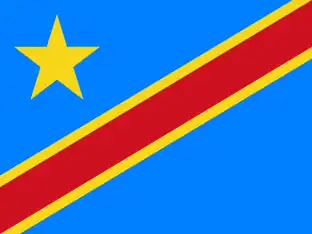 Democratic Republic of the Congo
Democratic Republic of the Congo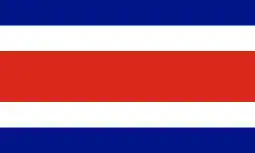 Costa Rica
Costa Rica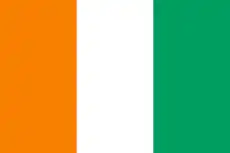 Côte d'Ivoire
Côte d'Ivoire Croatia[23][24]
Croatia[23][24] Cyprus: Used by Cypriot special forces.[25]
Cyprus: Used by Cypriot special forces.[25]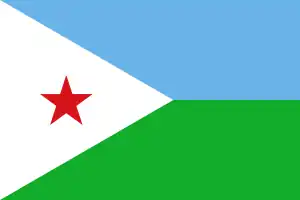 Djibouti
Djibouti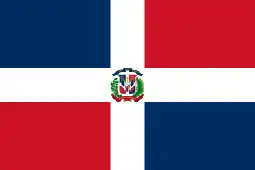 Dominican Republic
Dominican Republic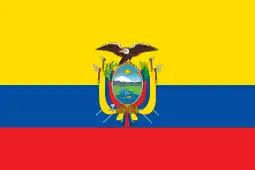 Ecuador
Ecuador Egypt
Egypt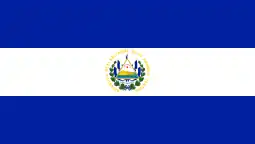 El Salvador[22]
El Salvador[22] Eritrea
Eritrea Estonia[26]
Estonia[26]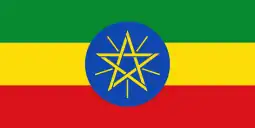 Ethiopia
Ethiopia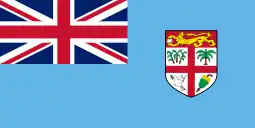 Fiji: Woodland camo used by some Fijian military units.[27]
Fiji: Woodland camo used by some Fijian military units.[27]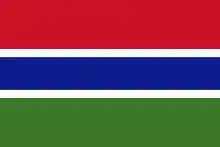 Gambia
Gambia Georgia: Former standard issue camouflage pattern of the Georgian Armed Forces, replaced in 2007.[22]
Georgia: Former standard issue camouflage pattern of the Georgian Armed Forces, replaced in 2007.[22] Germany: Used by Kommando Spezialkräfte Marine.
Germany: Used by Kommando Spezialkräfte Marine. Greece: Used by Underwater Demolition Command.[28]
Greece: Used by Underwater Demolition Command.[28] Guatemala
Guatemala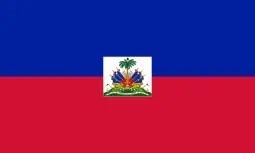 Haiti: Known to be used by the Haitian National Police.[29]
Haiti: Known to be used by the Haitian National Police.[29]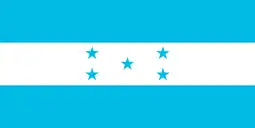 Honduras
Honduras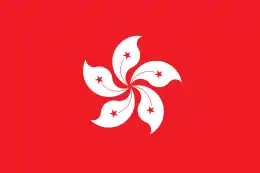 Hong Kong – Used by the Hong Kong Police tactical unit (SDU)
Hong Kong – Used by the Hong Kong Police tactical unit (SDU) Iraq: Formerly used by reformed post-2003 Iraqi military.[30][31]
Iraq: Formerly used by reformed post-2003 Iraqi military.[30][31] Israel: Used by Israeli military in unofficial capacity.[32]
Israel: Used by Israeli military in unofficial capacity.[32] Jamaica
Jamaica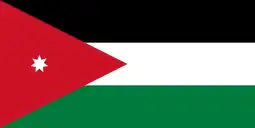 Jordan
Jordan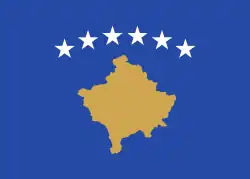 Kosovo – Worn by the Kosovar security forces.
Kosovo – Worn by the Kosovar security forces.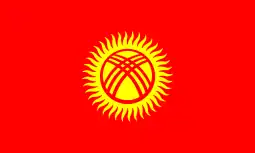 Kyrgyzstan: Asian-made Woodland patterns used in the Kyrgyz military.[33]
Kyrgyzstan: Asian-made Woodland patterns used in the Kyrgyz military.[33] Kuwait – Used by the Kuwait National Guard.
Kuwait – Used by the Kuwait National Guard. Latvia – Worn by the Latvian Land Forces from 1992 to 2007 when the M07 LATPAT camo was issued.[34][35]
Latvia – Worn by the Latvian Land Forces from 1992 to 2007 when the M07 LATPAT camo was issued.[34][35]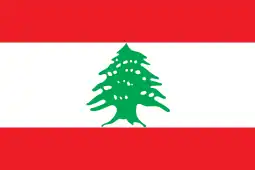 Lebanon - Replaced in 2017 by the Operational Camouflage Pattern
Lebanon - Replaced in 2017 by the Operational Camouflage Pattern Lithuania[36]
Lithuania[36] Luxembourg[37][38]
Luxembourg[37][38] Malaysia: Clones used by PASKAL commandos.[39]
Malaysia: Clones used by PASKAL commandos.[39] Mexico[22]
Mexico[22] Moldova – Worn by Army of the Republic of Moldova.
Moldova – Worn by Army of the Republic of Moldova. Montenegro: Used by the Montenegrin Special Anti-Terrorist Unit.[40]
Montenegro: Used by the Montenegrin Special Anti-Terrorist Unit.[40] Netherlands: Worn by the Royal Netherlands Marine Corps, most of the Woodland camos being replaced by Dutch-made fractal camo.[41]
Netherlands: Worn by the Royal Netherlands Marine Corps, most of the Woodland camos being replaced by Dutch-made fractal camo.[41]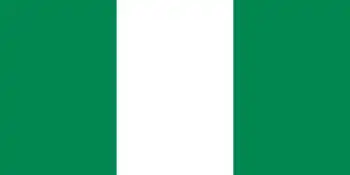 Nigeria: Used by the Nigerian military until they were replaced by the M14 pattern.[42]
Nigeria: Used by the Nigerian military until they were replaced by the M14 pattern.[42] North Korea: Reported to be used by North Korean soldiers stationed in the DMZ from 2010.[43]
North Korea: Reported to be used by North Korean soldiers stationed in the DMZ from 2010.[43] North Macedonia Used by some units in the past, used only for trainings today.
North Macedonia Used by some units in the past, used only for trainings today. Peru
Peru Philippines
Philippines Russia: Russia uses near-copies (Komplekt kamuflirovannogo obmundirovannogo [KKO]) and copies (Лес or Les [forest]) worn by MVD Agencies such as the Internal Troops and Spetsnaz GRU units.[44][45]
Russia: Russia uses near-copies (Komplekt kamuflirovannogo obmundirovannogo [KKO]) and copies (Лес or Les [forest]) worn by MVD Agencies such as the Internal Troops and Spetsnaz GRU units.[44][45] Saudi Arabia – Used by the Royal Saudi Air Force.
Saudi Arabia – Used by the Royal Saudi Air Force. Saint Kitts and Nevis: Used by Saint Kitts and Nevis Defence Force
Saint Kitts and Nevis: Used by Saint Kitts and Nevis Defence Force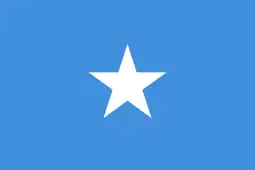 Somalia
Somalia South Korea : Republic of Korea Armed Forces introduced 1990 used to 2011
South Korea : Republic of Korea Armed Forces introduced 1990 used to 2011 Sri Lanka
Sri Lanka Syria: Copies made for the Syrian military.[46]
Syria: Copies made for the Syrian military.[46] Taiwan
Taiwan Thailand
Thailand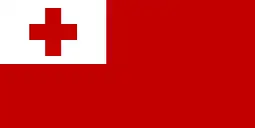 Tonga[22]
Tonga[22] Turkey[22]
Turkey[22] United States: Former standard issue camouflage uniform pattern for all branches of the U.S. Armed Forces. At the state-level, several state defense forces use it.[47]
United States: Former standard issue camouflage uniform pattern for all branches of the U.S. Armed Forces. At the state-level, several state defense forces use it.[47] Ukraine: Blue Woodland camos used by MVS units.[48] State Border Guard personnel use green woodland clones.[48]
Ukraine: Blue Woodland camos used by MVS units.[48] State Border Guard personnel use green woodland clones.[48] Uruguay – Worn by Army and Air Force
Uruguay – Worn by Army and Air Force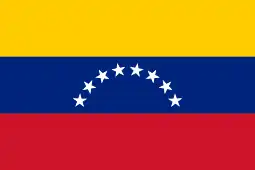 Venezuela
Venezuela Vietnam[49]
Vietnam[49]
References
- Christine O. Hardyman, ed. (1988). "Chapter 7: Support Services". Department of the Army Historical Summary FY 1981. United States Army Center of Military History.
- "Woodland Back". Soldier Systems. November 2014. Archived from the original on 2014-11-20.
- "ERDL Archives - Soldier Systems Daily".
- "YouTube". www.youtube.com. Archived from the original on 2018-04-24.
- "Making a 21st-century US military uniform every branch can wear - News - Stripes". www.stripes.com. Archived from the original on 2018-08-22.
- "MARSOC adopts woodland Crye Precision uniform". Military.com. 22 August 2011.
- Losey, Stephen (May 14, 2018). "The long-awaited OCP uniform is on its way to the Air Force — and here's when you could get it". Air Force Times. Retrieved May 15, 2018.
- "CAP REGULATION 39-1 - CIVIL AIR PATROL UNIFORM REGULATION" (PDF). NATIONAL HEADQUARTERS CIVIL AIR PATROL. March 5, 2020. Retrieved December 23, 2020.
- "Questions & Answers about the Tennessee State Guard". Third Regiment of the Tennessee State Guard Official Website. Retrieved 22 February 2017.
- "VDF Regulation 670-1" (PDF). vdf.virginia.gov. Retrieved 18 December 2021.
- "Frequently Asked Questions". Ohio Military Reserve. Retrieved 22 February 2017.
- "Uniform Gallery- Rhode Island -State Police". risp.ri.gov. Archived from the original on 8 November 2016. Retrieved 12 January 2022.
- "Afghanistan - Camopedia". www.camopedia.org. Retrieved 23 July 2023.
- Larson (2021), p. 126.
- Larson (2021), p. 194.
- Larson (2021), p. 199.
- Larson (2021), p. 203.
- Larson (2021), p. 205.
- "Specijalne-jedinice.com - Special Anti-terrorist Unit of Republic of Srpska". specijalne-jedinice.com. Archived from the original on March 24, 2018.
- Larson (2021), pp. 209.
- "Canadian Forces Woodland1". www.mpmuseum.org. Archived from the original on 2017-11-13. Retrieved 2022-04-13.
- "Kamouflage.net — U.S. Woodland pattern camouflage". www.kamouflage.net. Archived from the original on 3 March 2014. Retrieved 12 January 2022.
- "Croatian Woodland shirt". camouniforms.net.
- "Croatian Woodland Shirt 02". camouniforms.net.
- Larson (2021), p. 219.
- "Estonia - Camopedia".
- Larson (2021), p. 477.
- Larson (2021), p. 390.
- jwh1975 (9 June 2015). "Uphold Democracy 1994: WWII weapons encountered".
- "Iraqi Woodland Camo". Middle East Militaria.
- "New Iraqi Woodland Camo Uniform". Middle East Militaria.
- Larson (2021), p. 255.
- Larson (2021), p. 268.
- "Latvian M07 LatPat Camouflage". 29 April 2020.
- "Latvian US M81 Woodland Camouflage". 4 May 2020.
- "Lithuanian Woodland jacket". camouniforms.net.
- "STANDARDIZED U.S.-LED COALITION FORCES UNIFORM" (PDF). apps.dtic.mil. Archived (PDF) from the original on 27 March 2020. Retrieved 12 January 2022.
- "Luxembourg gets its own camo pattern!".
- Larson (2021), p. 275.
- "Specijalne-jedinice.com - Special Anti-terrorist Unit of the Republic of Montenegro". specijalne-jedinice.com.
- "Dutch Army Adopts Netherlands Fractal Pattern Camouflage - Soldier Systems Daily".
- "Nigerian Armed Forces ~ M14 Arid Pattern". 29 December 2020.
- "North Korean soldiers at Joint Security Area sporting new uniforms, photos reveal | NK News". 22 November 2018. Archived from the original on 2020-03-04.
- Camouflage Uniforms of the Soviet Union and Russia: 1937-to the Present by Dennis Desmond, Schiffer Publishing, Ltd. (December 1, 1997) ISBN 978-0764304620
- Galeotti (2015), p. 39.
- "From Russia with Love, Syria's AK-74Ms". bellingcat. 19 February 2015.
- "VDF chaplains provide support at Fort Pickett chapel".
- Larson (2021), p. 458.
- tintucvietnam.vn (2018-03-04). "Tìm hiểu về quân phục ngụy trang của quân đội Việt Nam (phần 2)". Tin tức Việt Nam - Cập nhật tin tức trong nước hôm nay (in Vietnamese). Retrieved 2019-04-16.
.jpg.webp)